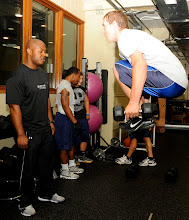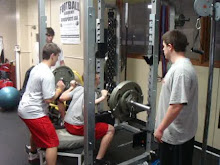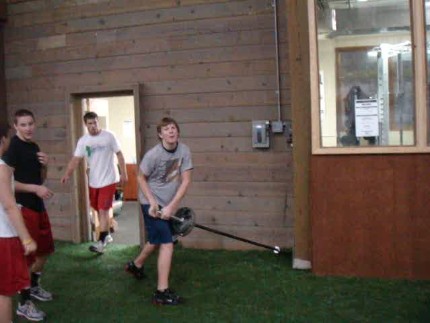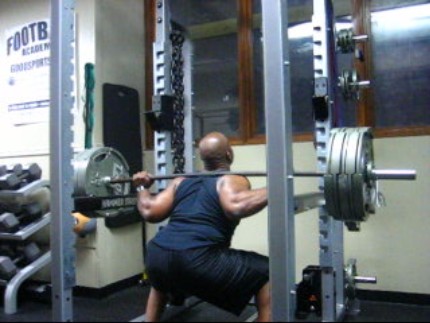I have here what I like to call the "OPENERS". This a 3 part series of exercises sure to alleviate shoulder weakness, stiffness & pain.
Allow me to use a football analogy here. Popular football coaching these days shows a commonality with regards to how football teams begin their games. Most coaches will use a script of plays that are set in stone based on the game plan for the specific team they are playing that week. These coaches factor in the other teams tendencies and come up with a script of anywhere from 10 - 15 plays they will run in succession with no variation. We in like manner have adopted a similar approach for our athletes regarding shoulders & hips. In this post we will simply discuss the shoulders. These openers are a scripted grouping of exercises that the athletes will follow each workout to combat the opposing team, which in this case happens to be injury.
This is to be completed after a basic general warm-up usually involving a 3-5 minute jog or bike/elliptical.
1) Plank Trio:
- Regular plank (holding good posture with no dip or bend in the hips. elbows should be comfortably located directly under the shoulders).
- Strait arm plank (same as above just done with full extension of the arms)
- Isometric plank hold (done same as above with the exception that the athlete will lower his/her body holding a 1/2 push position for anywhere from 3-5 seconds)
2) YTWL:
- Done lying prone on an incline bench or over a physio-ball for the more advanced athlete.
- I usually do these without weight. You will see why in a minute.
3) Dumbbell Medley- with light DB's perform 1 round of this medley:
db upright row x 8-10
db curl w/ press x 8-10
db bent over row x 8-10
db squat w/ press x 8-10
db lateral raise x 8-10
*Adding weight to the YTWL'S can be a beginner substitute for this.
* After 1 round of this proceed with the remainder of your workout.
**Try this pre-workout sequence prior to each upper body workout and then "Medley" only as a finisher on your lower body days.
Quick Notes:
This is intended to help assist in the health of the shoulder. If you are performing highly intensive shoulder work already such as barbell push-press, snatches, clean & jerk or any other form of strenuous work, be cautious about over training the shoulders.
Range of motion for these exercises should be FULL. However, this can be a goal of yours that you work towards with each workout. So take your time and exercise as much caution as necessary.
Stretching & performing mobility drills for the shoulders is very important. Please make sure you are adding in pre & post workout mobility exercises such as (band dislocations, band lat traction, rear delt stretches as well as stretches for the pecks, bi's & tri's.












No comments:
Post a Comment